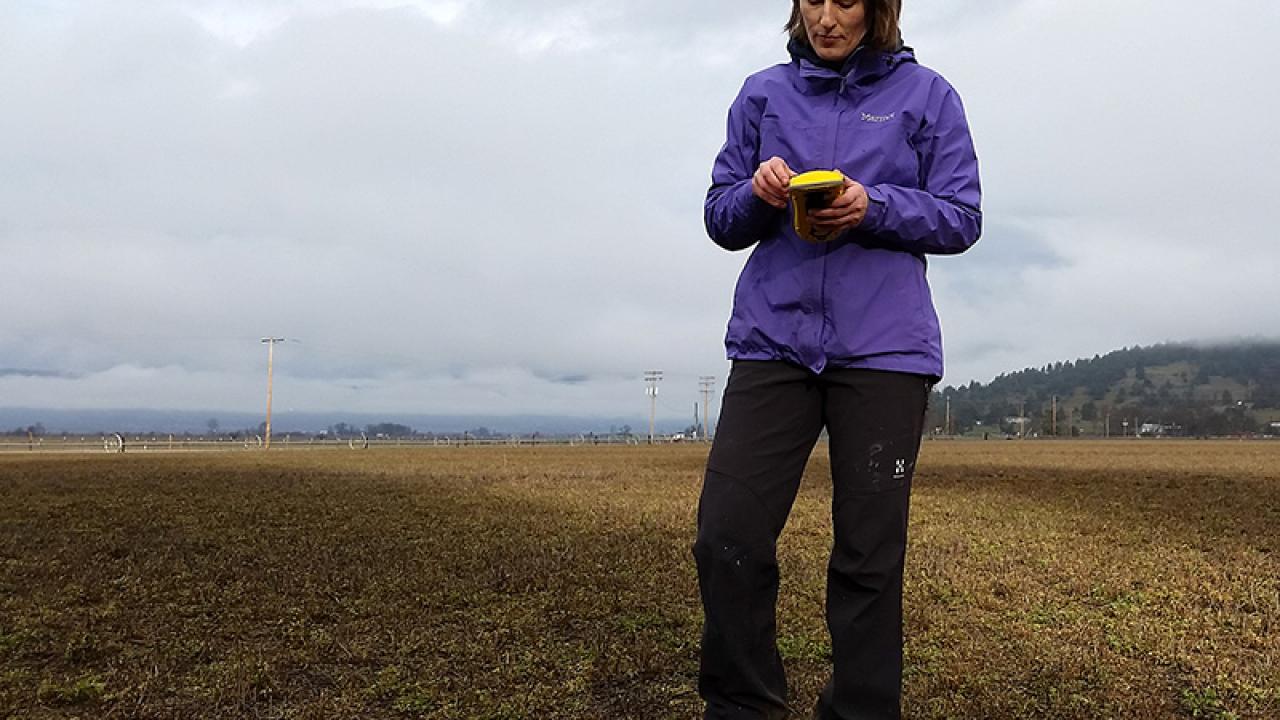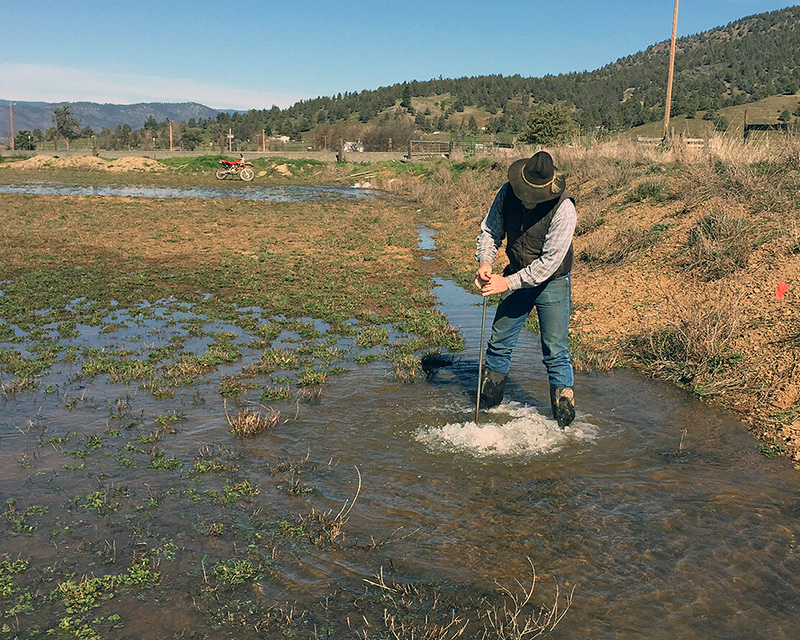
Farmland May Provide Key To Replenishing Groundwater
Replenishing supply may benefit everyone in the drought-stricken Golden State.
California’s aquifers are shrinking as more growers pump groundwater to keep crops alive. But that fertile farmland may also provide the means for replenishing groundwater to benefit everyone in the drought-stricken state.
UC Davis researchers are encouraged by early results from tests to see if deliberately flooding farmland in winter can replenish aquifers without harming crops or affecting drinking water.
“On-farm flooding looks very promising,” said Professor Helen Dahlke, a hydrology expert with the UC Davis Department of Land, Air and Water Resources. “We’re pleasantly surprised by how quickly water tables have responded to on-farm flooding without damage to crops.”
Dahlke and her team are working with alfalfa growers in Siskiyou County and will test flooding on almonds in the Central Valley this winter, looking at plant physiology, infiltration rates, potential water quality concerns, costs, and other issues. They are building on previous research in the Kings River Basin where up to 75 percent of diverted floodwater percolated down to aquifers.
“We flooded pistachios, alfalfa hay, and wine grapes,” said Don Cameron, manager of Terranova Ranch along the Kings River in Fresno County. “Our wine grapes were under water for five months, which raised a few eyebrows, but they did fine. Diverting floodwater to farms can recharge groundwater and reduce the risk of downstream flooding. It’s a good situation all around.”
Saving for a sunny day
California is in chronic groundwater overdraft: There’s more water being pumped from the ground than filtering back in. In wet years, gravity helps refill aquifers as land absorbs water from rain, rivers, and snowmelt. In dry years, several water districts help that along by diverting excess surface water during storms and flood releases into infiltration basins ─ confined areas of sandy soil.
But open land dedicated to infiltration is scarce. Can some of California’s millions of acres of farmland be called into service?
There’s a lot to consider. Not all soils are particularly permeable and not all crops can tolerate extra irrigation in the winter. Some soils are especially saline, and some crops need more nitrogen than others. Researchers wonder whether flooding fertilized farmland or saline soil will leach those chemicals into the groundwater. Or, could on-farm flooding actually improve groundwater quality by diluting salts and nitrates?
Professor William Horwath, a soil biochemist with the UC Davis Department of Land, Air and Water Resources, and Dr. Phillip Bachand, environmental engineer with Tetratech, Inc., in Davis, started looking at on-farm flooding at Terranova Ranch in 2010 when downstream flooding was a bigger issue than drought in California. They diverted floodwater from Kings River to various test plots and found that it recharged groundwater without hurting crops or water quality.
As the drought wears on, more researchers are taking a closer look at the possibilities and limitations of on-farm flooding to recharge groundwater. Soil expert Anthony O’Geen ─ a UC Cooperative Extension specialist with the UC Davis Department of Land, Air and Water Resources ─ recently concluded some 3.6 million acres of farmland have good recharge potential because they could likely accommodate deep percolation with little risk of crop damage or groundwater contamination.
Pears, wine grapes, many annual crops, and some varieties of almonds, peaches, and plums appear best suited for on-farm flooding, O’Geen’s team concluded in a paper recently published in the journal California Agriculture.
“Alfalfa might also be an ideal crop for groundwater banking because it requires little or no nitrogen fertilizer,” O’Geen said.

Bryan-Morris Ranch manager Jim Morris stands in a flooded alfalfa field along the Scott River in Siskiyou County. (Photo courtesy Steve Orloff)
Testing alfalfa and almonds
In spring 2015, Dahlke and her team flooded alfalfa at Bryan-Morris Ranch along the Scott River in Siskiyou County, applying more than double the irrigation the field normally gets in a year.
“The ground was already saturated because it had rained quite a bit before the experiment began,” said Jim Morris, Bryan-Morris Ranch manager. “It was amazing to see how well the land absorbed the water and how quickly the water table rose. That’s good news for farming and the environment.”
The field produced more weeds than usual. But otherwise, the alfalfa suffered no ill effects, perhaps because it was dormant at the time.
“The alfalfa probably would have drowned if it was watered that heavily during the summer months,” Dahlke said.
Dahlke will conduct larger-scale experiments with alfalfa in Siskiyou County and in other parts of California with warmer climates and different soils. Meanwhile, Dahlke and Professor Ken Shackel with the UC Davis Department of Plant Sciences are designing a two-year project with almonds in the Central Valley.
“Starting in December, we’re going to apply two feet of water over 60 days to a small portion of two almond orchards,” Shackel said.
Shackel and Professor Astrid Volder with the UC Davis Department of Plant Sciences will keep a close eye on how the irrigation affects tree physiology and root health. Dahlke will monitor salt and nitrates in the soil.
“We’ll see whether certain levels of flooding dilute salt and nitrate concentrations so that there is no groundwater contamination,” said Dahlke.
The Almond Board of California is funding the project, anticipating that certain almond orchards will be good candidates for groundwater recharge.
“Almond orchards have good soil characteristics, and water delivery systems are already in place,” said Bob Curtis, director of agriculture affairs for the almond board. “Winter flooding should actually benefit the trees while replenishing groundwater to benefit us all.”